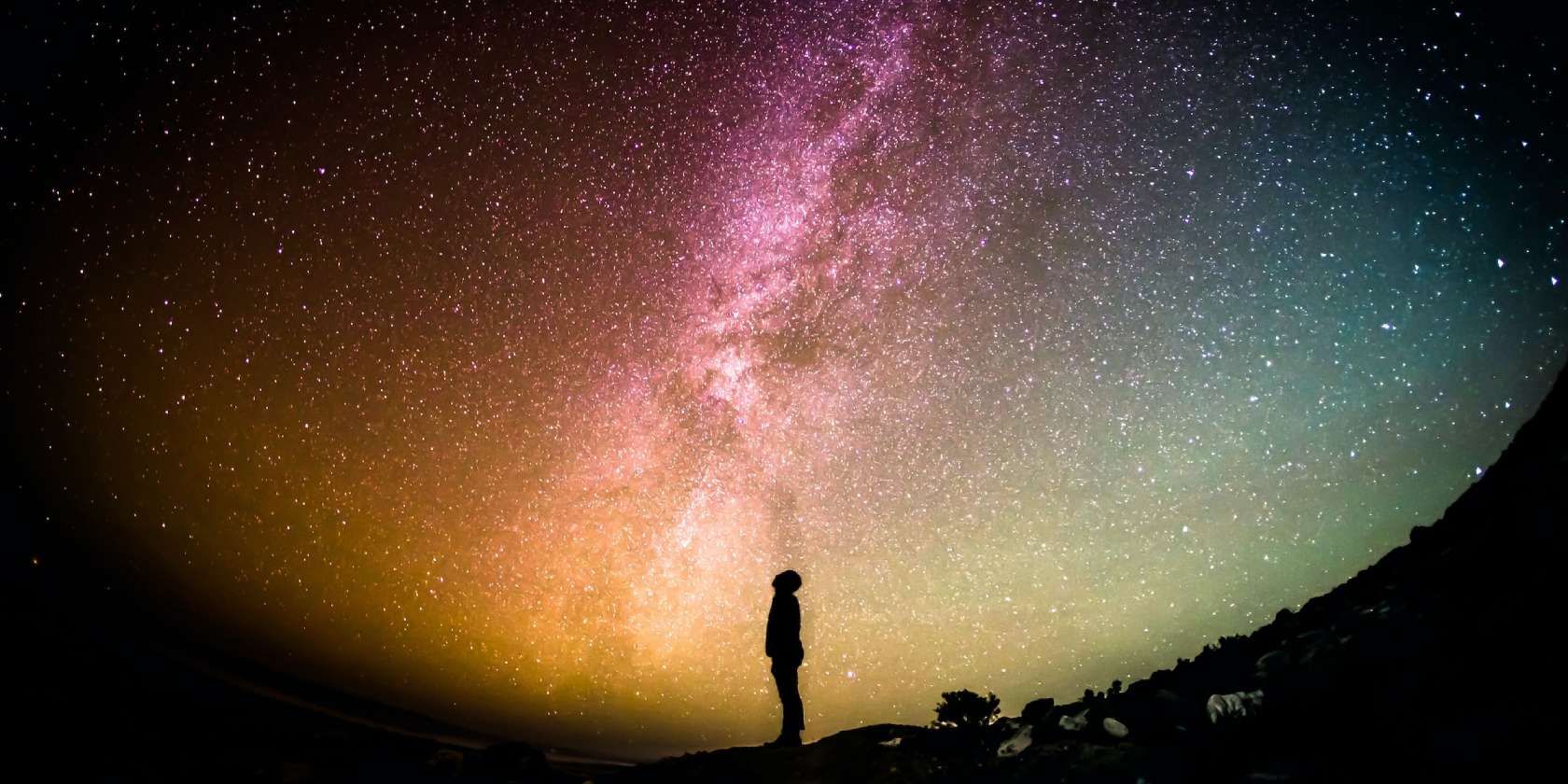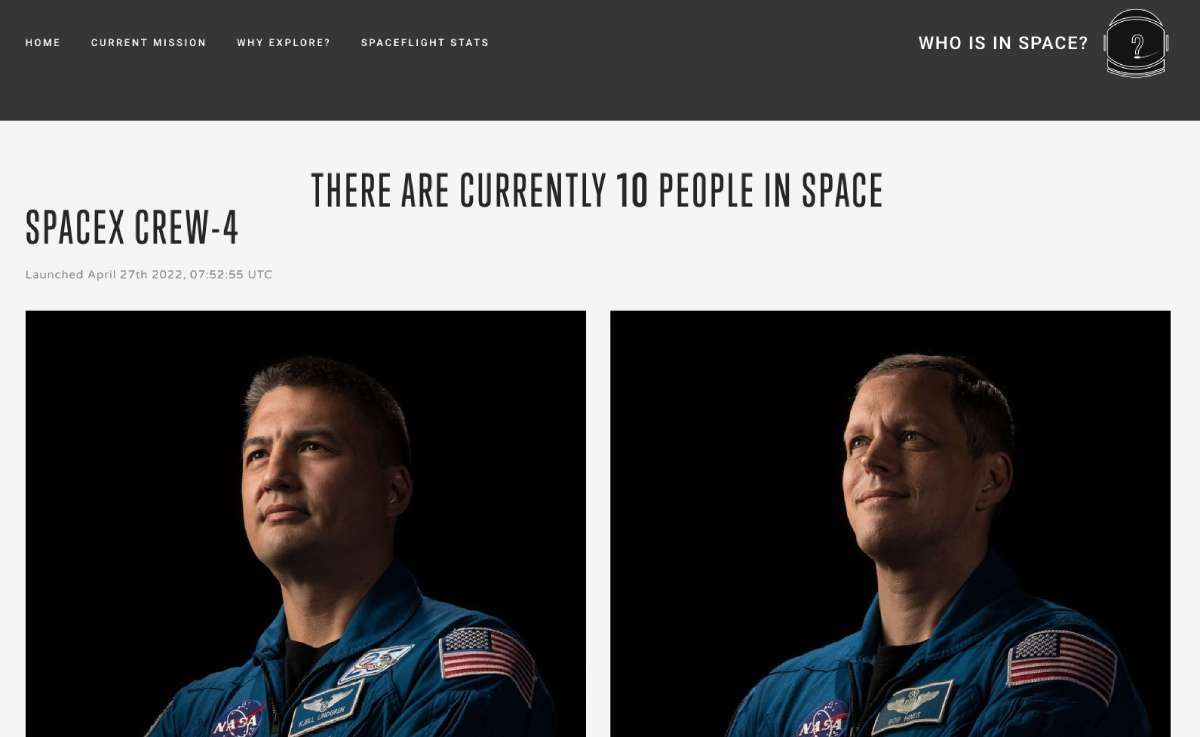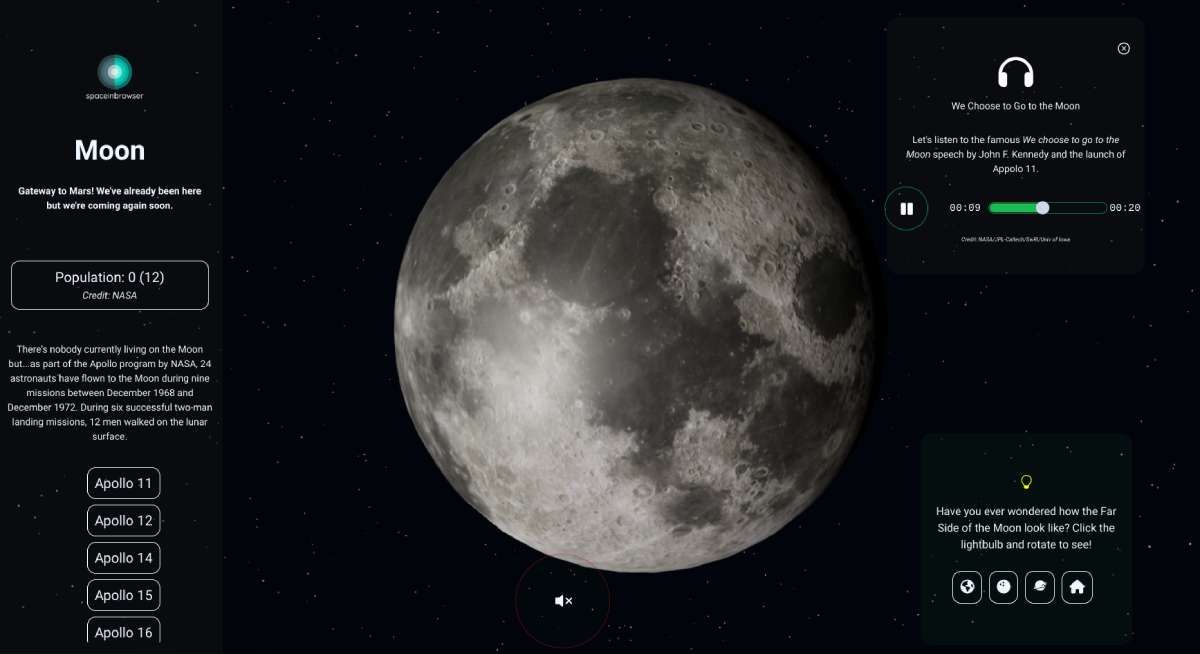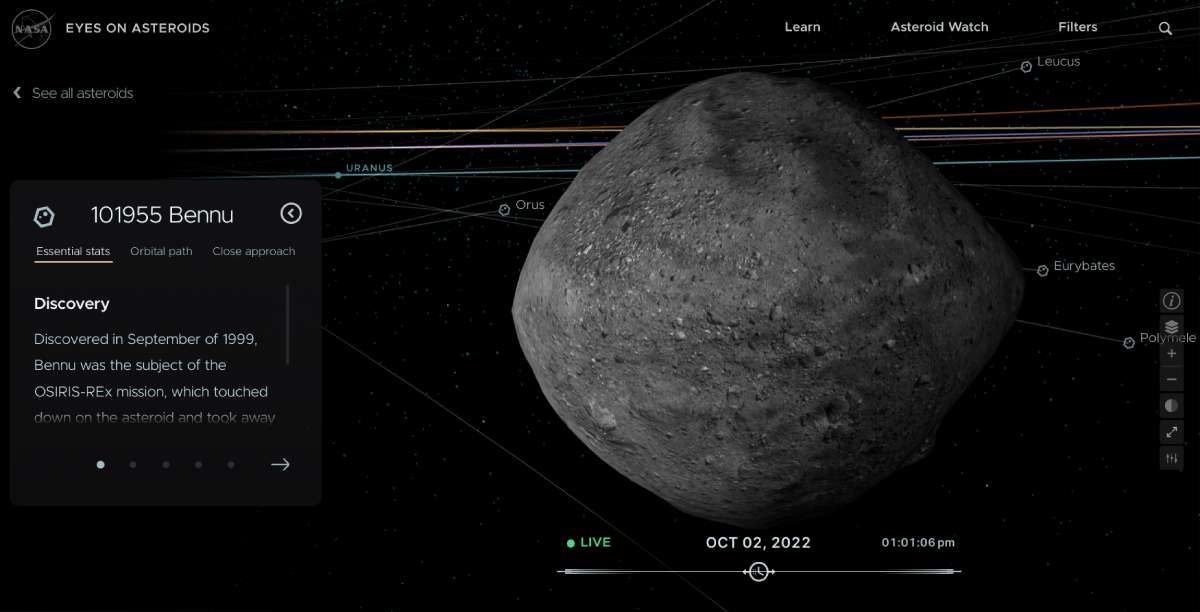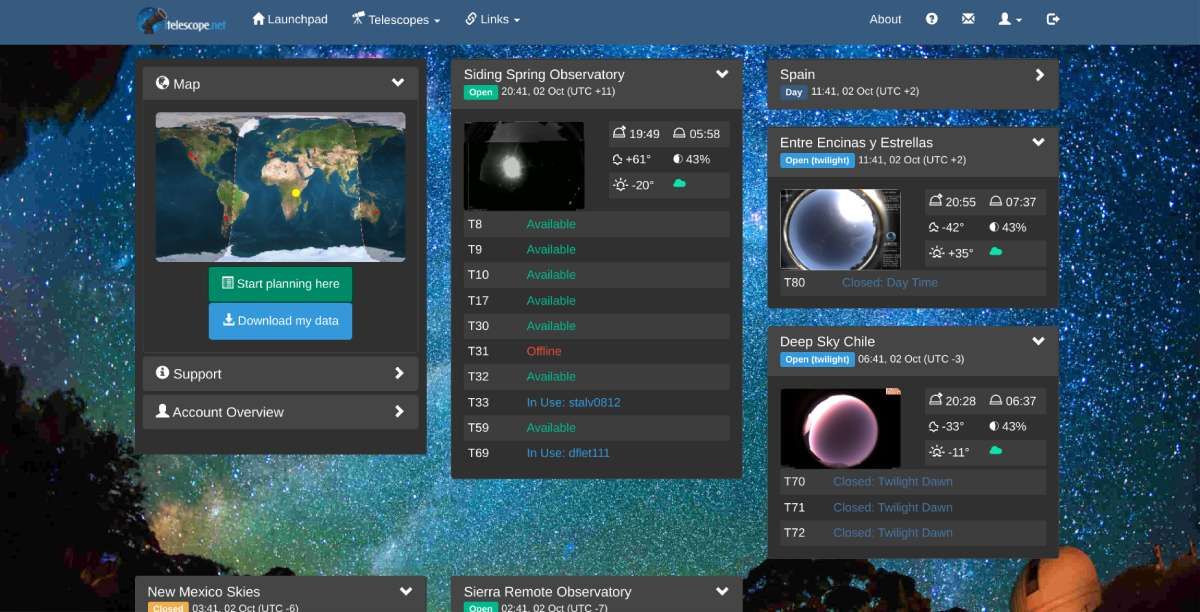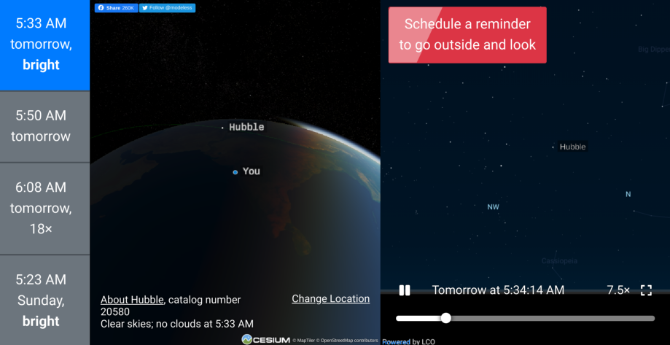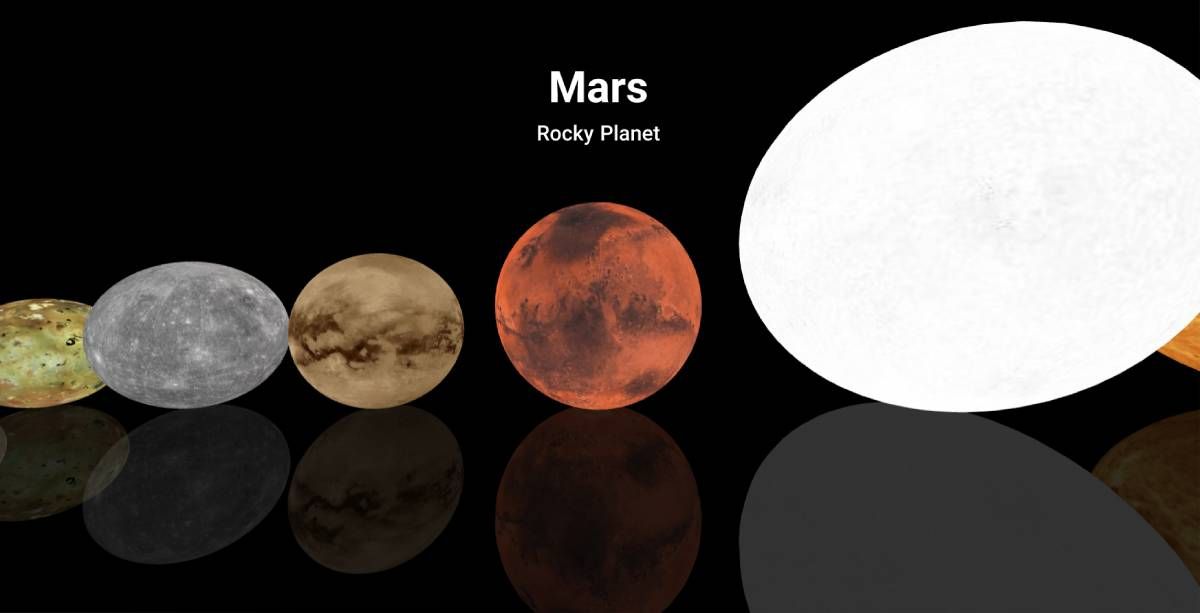World Space Week begins on October 4 to celebrate the world's glory beyond the Earth and mankind's contributions. The official theme for 2022 is Space and Sustainability, and it's an important topic. But you know what's more exciting? Looking at just how freaking cool space is. And these sites are here to show you the splendors of our universe in all its glory.
Astronomy is inherently intriguing for humans. For centuries, we've been looking up at the skies and slowly peeling the layers of the great cosmos beyond. It's fascinating, it's mysterious, and it's plain outright fun. From exploring space in a tab to taking charge of a giant telescope in Mexico through your browser, these websites put the focus on the fun elements of space while still teaching you a thing or two.
1. Who Is In Space (Web): Astronauts (and Other Things) Currently in Space
Did you know that at least a few humans aren't on Earth at any point in time? The International Space Station has a crew of astronauts and scientists doing remarkable things while floating in space in the planet's orbit. Who Is In Space (WISS) is the story of these explorers and what they're doing.
Made by Destin Sendlin of Smarter Every Day, one of the best educational YouTube channels, WISS shows a portrait of every individual in space right now, along with the total time they've spent so far and the mission that launched them. And then there are other funny parts, like the total number of toilets in space right now or active robots exploring space beyond what humans can do.
WISS also collects cool statistics about space, like which astronaut spent the most total time in space or how many humans have slipped the surly bonds of earth. Sendlin is a space nerd, and the site also links to some of his videos on the importance of space exploration and the cool explorers who go up there.
2. Space In Browser (Web): Explore Space Through a Desktop Browser
Space In Browser is a unique way to explore the great beyond through the internet. It doesn't look good on phones, so ensure you use a computer with a modern browser. The site is still pretty new, and the developer promises several additions, but it's a promising start that's already worth checking out.
Largely, you can explore the earth, things in low-earth orbit, the moon, and Mars. Click any of these objects to put them in focus. You can rotate them around to see various aspects of what they look like while getting additional information about them in the sidebar.
For example, with the moon, you'll find information about all the Apollo missions undertaken by NASA. Click on a mission, and its landing site will be marked on the moon. And you can even listen to John F. Kennedy's speech launching the Apollo program. All together, it's a cool and fascinating look into space and mankind's relationship with it.
3. NASA's Eyes (Web): NASA's Best Visualizations of Space for the Common Man
Eyes is one of the coolest NASA sites to explore space. Using real data from satellite and telescope imagery, along with graphics rendered by NASA's scientific visualization studio, Eyes gives a never-before look at the universe, all from your browser.
The main showpieces are the solar system, asteroids around Earth, exoplanets, and the Earth itself. In each, you'll get a 3D interactive experience, where you can zoom, pan, rotate, and click on objects to learn more about them. The solar system visualization is the most detailed, but the others are no slouch. It's 3D Google Maps of the universe, in a nutshell.
If you install the NASA Eyes app, you'll unlock a few other features apart from what you see in a browser. Eyes offers guided tours of things like the Voyager mission or eclipses in our solar system, explaining everything in simple terms for the common man to understand.
4. iTelescope (Web): Control High-End Telescopes Remotely to View Space
Not everyone has a telescope at home, let alone the kind of professional telescopes that are necessary to view far-away galaxies or for astrophotography. But the internet will give you access to one for free.
Register at iTelescope and all members get access to a telescope in the USA and another in Australia. Paid members can access more telescopes. You can set when and where to point the telescope, as well as click a photograph.
It's a little confusing if you're a newcomer, with many technical terms thrown at you, but iTelescope has detailed guides to take you through the steps. You can also view configurations by other members to see where they are pointing their telescopes, which is a great way to learn more.
5. See a Satellite Tonight (Web): Simple, Free App to See Satellites Passing Above You
No telescopes or equipment, just your naked eye watching as satellites streak by the night sky. Sounds hard to believe, but it's easier than you might think. See A Satellite Tonight (SAST) will tell you when and where to look.
Simply grant the app access to your location, and in a few minutes, it'll give you a list of satellites that will pass over you and be visible without tools. SAST adds illustrations for how the satellite will look from the ground (and its trajectory in space), so you know exactly what to look out for. It's so easy, it's no wonder that SAST is one of the most extraordinary sites for space and astronomy fans.
6. The Size of Space (Web): Interactive Visualization of the Scale of the Universe
You know that the universe is really, really, really, big, but our brains can't visualize exactly how big. The Size of Space is a fun, interactive website to try and show the true scale of the known, observable universe.
You start with an astronaut and then scroll right to other objects that are found in space. And you keep going through asteroids, satellites, planets, stars, galaxies, and clusters to see how large everything is (and how insignificantly tiny we are). It is a cool way to get perspective, but also fun to see how there can be moons bigger than planets or how small the sun is compared to other known stars.
Try Some DIY Space Projects!
If you still haven't had your fill of space with all these different and cool websites, then here's the funkiest thing you can try: make something yourself for space! No, you don't need a rocket nor NASA-level funds. There are several DIY space projects you can build yourself to get a personal touch with the great beyond.

